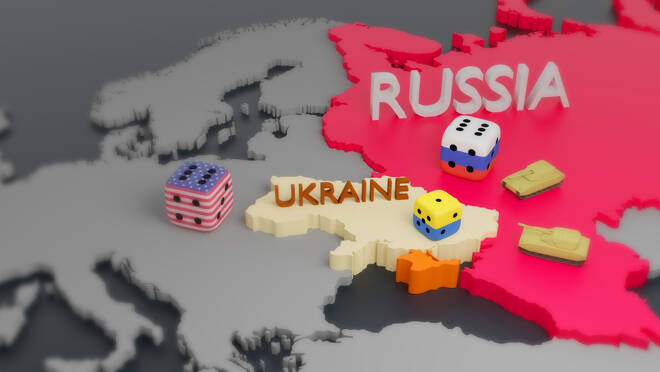Advertisement
Advertisement
Ruble Takes a Deep Breath Before a Deeper Dive
By:
The Russian ruble has been in a downturn since the end of October 2021. Escalation of conflicts within the proximity of Russian borders and within neighboring countries, with which Russia has a tied alliance, weakened the Russian currency.
Developments in Kazakhstan, a neighboring country with Russia, had a negative impact on the Russian ruble. The Russian ruble no longer was aligned to the price movement of crude oil. Whilst the uptrend of crude oil since October 2021, the Russian ruble was heading to the opposite direction and correlation of the currency was slackening.
The USA and NATO Vs Russia
The situation worsened when the US and the North-Atlantic Treaty Organization supported Ukraine to defend against an invasion from Russia. The US, UK and other participants of the Alliance warned Russia about the heavy sanctions bombardment from the West in case the tension with Ukraine escalates.
Russia on the other side demanded the US and the Alliance to guarantee that NATO will not continue its expansion in Eastern Europe during the Geneva talks on January 10, 2022. While waiting for an official reply from the US, Russian currency experienced a massive drop, and USD/RUB for the first time since April 2021 closed above 78. The pressure on the Ruble continued this week as the US, UK and other officials started the evacuation of their embassy employees from Ukraine’s capital – Kyiv.
Officials from both Russia and Ukraine reported a military build-up near their borders. The tension was high and it led to the further weakening of the Russian ruble, the Ministry of Finance announced a halt of foreign currency purchases, to withhold the further downslide of the ruble.
On January 26, during the FED interest rate decision, USD/RUB reached November 2020’s average of 80 rubles per US Dollar. Russian Minister of Foreign Affairs Sergey Lavrov informed the press that they have received an official reply to their concerns from the US and the Alliance and there are points that are ready for a serious discussion.
Despite the Russian officials calling the reply as less positive as the main question remained unanswered, the market responded positively and the ruble gained 1.87% in a day, USD/RUB dove from 79.84 to 77.4.
Though it might sound very optimistic, the issue is still not resolved and will take some time and effort, leaving a high pace of volatility to the USD/RUB.
RUB/USD Technical Analysis
From the technical analysis point of view, there is still room for growth for the US Dollar. Despite being extremely overbought on RSI on daily and weekly timeframes, the price action of USD/RUB will be solely bound to the developments in the Ukraine.
A weekly USD/RUB chart suggests that the pair could climb to 81.60 to retest the major monthly dynamic resistance. The pair has already made a breakout from a weekly symmetrical triangle of March 16, 2020 and today’s slide looks more like a retest of this triangle’s dynamic resistance as support.
If USD/RUB closes above 80.60 it will continue up to 83.9, whereas the Russian Ministry of finance to withhold the further devaluation of Ruble might decide to sell-off some of its foreign currency and gold holdings.
The same is confirmed on an hourly USD/RUB chart. The pair has tested the local hourly dynamic support and the weekly triangle’s upper edge as support. Hence, the upside potential is still back on.
The upside potential of the pair should not be considered as a probable escalation of the conflict but there are other factors that might take place, such as the oil price. High oil prices are becoming a concern, hence it is expected that OPEC might increase the production to decrease oil prices and fulfill the demand.
About the Author
Aziz Kenjaevcontributor
Technical analyst, crypto-enthusiast, ex-VP at TradingView, medium and long-term trader, trades and analyses FX, Crypto and Commodities markets.
Advertisement
